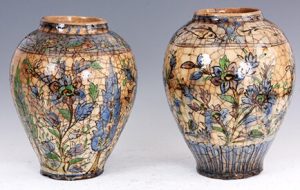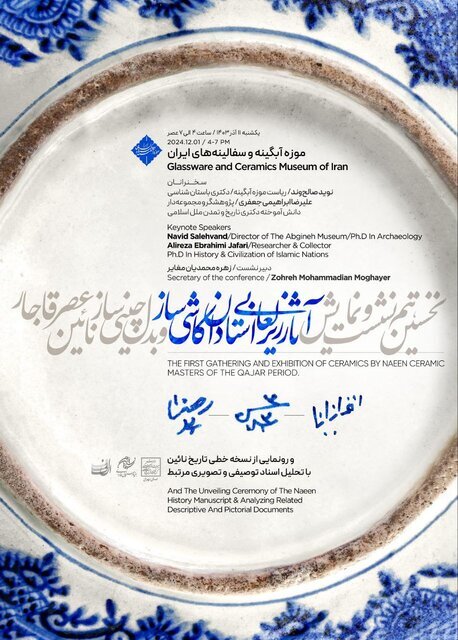Tehran museum to showcase Qajar-era underglaze pottery and Chinese imitation ceramics
TEHRAN – The Glassware and Ceramic Museum of Iran is set to host a specialized exhibition and meeting highlighting the Qajar-era art of underglaze pottery and Chinese imitation ceramics crafted by master artisans from Na’in of Iran’s Isfahan province. The event, which also features the unveiling of a historic manuscript titled History of Na’in, will

TEHRAN – The Glassware and Ceramic Museum of Iran is set to host a specialized exhibition and meeting highlighting the Qajar-era art of underglaze pottery and Chinese imitation ceramics crafted by master artisans from Na’in of Iran’s Isfahan province.
The event, which also features the unveiling of a historic manuscript titled History of Na’in, will begin on Sunday, December 1, with the exhibition running for one month, ISNA reported.
According to organizers, the opening day includes the specialized meeting, chaired by Zahra Mohammadian-Maghayer, with presentations by experts Navid Salehvand and Alireza Ebrahimi Jafari. The event is scheduled from 4:00 to 7:00 PM and invites art enthusiasts, archaeologists, and Iranian handicrafts aficionados to delve into the enduring legacy of these decorative arts, the report said.
Artistic highlights
The exhibition showcases unique underglaze pottery and Chinese imitation ceramics, known for their white clay composition. The crafting process involves materials such as silica (flint), bentonite, kaolin, and Gel-e Sarshoor, a specific type of natural clay. It is said that Chinese imitation ceramics emulate the fine porcelain aesthetic but use local techniques and materials.
According to sources, underglaze painting, a significant feature of this art form, involves decorating ceramic or pottery pieces before glazing. This method ensures durability, as the decorations are sealed under a transparent glaze and fired at high temperatures. While the technique limits the palette due to the high firing temperatures, it produces vivid and long-lasting designs. Notable examples include traditional blue-and-white porcelain and Iznik ceramics.

Historical and cultural significance
The art of underglaze painting and Chinese imitation ceramics flourished in Na’in during the Qajar era, reflecting a blend of local innovation and influence from global ceramic traditions. The unveiling of the “History of Na’in” manuscript adds historical depth, shedding light on the cultural and artistic developments of the period.
The history of Na’in dates back to nearly 2000 years, which makes it one of the oldest continuously settled towns in the Iranian plateau.
Na’in lies 170 km north of Yazd and 140 km east of Isfahan. Like much of the Iranian plateau, it has a desert climate, with a maximum temperature of 41 °C in summer and a minimum of -9 °C in winter. In ancient times, the city was at the crossroads of a desert road connecting Tabas and Mashhad, and has been an important junction of converging trade routes since Sasanian times. Na’in was known for its pottery and textiles; Today it is best known for its fine hand-knotted carpets and hand-woven camel wool cloaks, which are made in the surrounding villages.
AM
